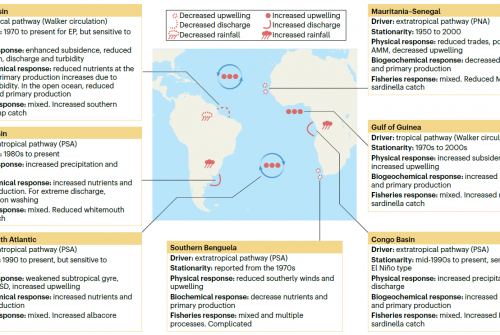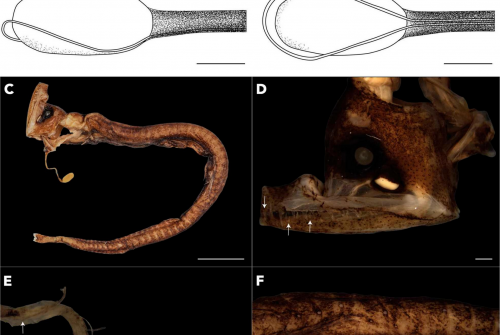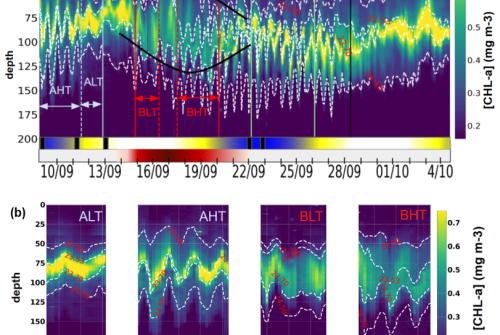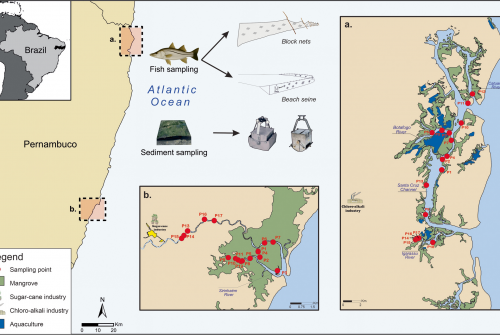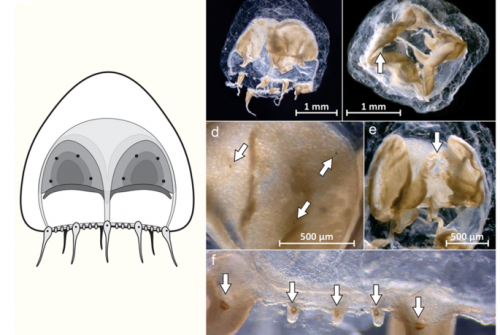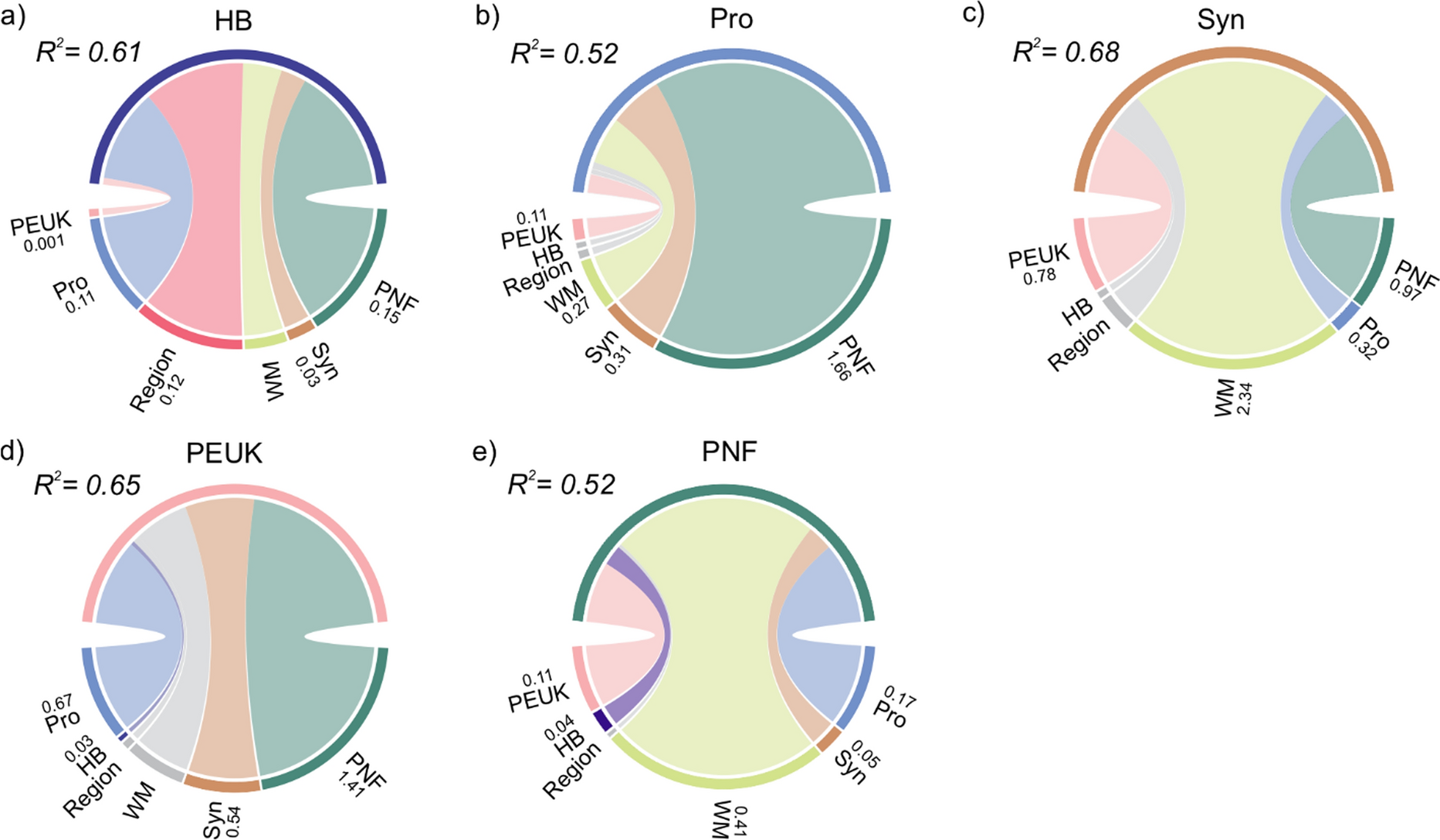
In oligotrophic oceans, trophic transfer at the base of pelagic food webs is driven by shifts in biomass ratios of plankton microbial groups, which determine dominant nutrition modes, i.e., autotrophy and heterotrophy. Understanding how the physical environment impacts transient spatial patterns of these communities is essential to quantify productivity of plankton food webs. Using data from a coast-offshore field expedition in the Southwestern Tropical Atlantic, we assess the influence of nutrient limitation and contrasting hydrological settings on spatial patterns and biomass ratios of pico- and nanoplankton. The results showed an overall nitrogen-limited nutritional environment that lessens autotrophic growth while favoring the dominance of heterotrophic bacteria biomass. Offshore, this configuration is however altered in the deep chlorophyll maximum due to an enhanced nutrient availability promoted by a shallowing of the nutricline, which favors an increase in picoeukaryotes biomass. Autotrophic cells showed different distributions over the coast-offshore transect. Synechococcus and pigmented nanoflagellates had higher biomass on the shelf, while Prochlorococcus dominated the entire region and picoeukaryotes had higher biomass offshore. Overall, our results pinpoint the importance of heterotrophic biomass in the plankton microbial community, providing novel clues for understanding the carbon transport in oligotrophic marine ecosystems.
DOI: 10.1007/s10750-023-05427-9
Reference
Farias G.B., Castro Melo P.A.M., López-Abbate M.C., Bertrand A., Carré C., Bec B. Molinero J.-C. 2024. Nutrient availability regulates the microbial biomass structure in marine oligotrophic waters.



